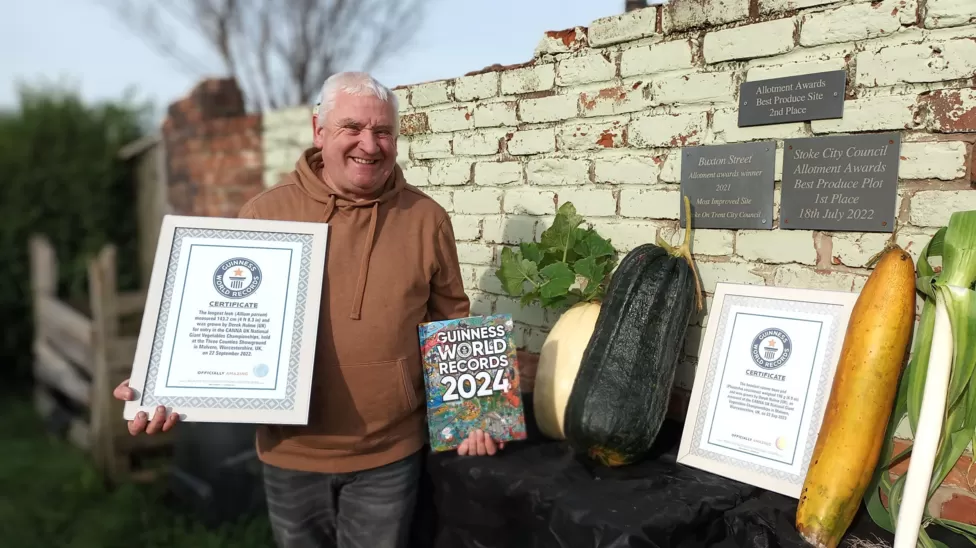 Introduction:
Introduction:
Your journey into the heart of allotment gardening in North Staffordshire, England begins here! Even though winter’s chill might still linger, now is the perfect moment to map out and gear up for the upcoming growing season. In this comprehensive blog, we’re taking a leaf-deep dive into North Staffordshire’s allotments. From maintenance tricks of the trade to smart crop decisions, let’s unravel the magic of sustainable gardening in North Staffordshire.
Bridge the Winter Gap: January Maintenance
Don’t let January’s frosty mornings fool you! There are numerous tasks you can perform on your allotment amidst the winter chill. Kick off the new growing season on a clean slate by sprucing up your greenhouse and decluttering the shed. Make it a routine to clear away weather-worn and decaying vegetation to keep diseases and pests at bay. Regular weeding will ensure your allotment beds stay pristine and primed for planting.
Nourishing the Soil: Mulching and Preparatory Measures
Mulching serves as an excellent tool to enhance soil fertility and moisture retention. However, refrain from mulching spots reserved for carrots and parsnips as they prosper in soil devoid of fresh manure. Leverage well-decayed manure or homemade compost to mulch empty beds throughout autumn and winter. Remember, well-prepared soil is the foundation of a successful allotment garden. Inventory your cache of seeds and order any that are required.
Early Bird Specials: Sowing and Crop Selection
 Though it might seem premature to sow most seeds, select crops thrive with an early start in North Staffordshire. Onion seeds and aubergines, which require an extended growing season, can be initiated in a propagator. Hardy broad beans like Aquadulce Claudia can replace autumn-sown beans in the greenhouse. Also, try sowing early peas under cover to outpace the growing season. Root crops like parsnips, swede, and celeriac will be ripe for the picking from your root crop bed.
Though it might seem premature to sow most seeds, select crops thrive with an early start in North Staffordshire. Onion seeds and aubergines, which require an extended growing season, can be initiated in a propagator. Hardy broad beans like Aquadulce Claudia can replace autumn-sown beans in the greenhouse. Also, try sowing early peas under cover to outpace the growing season. Root crops like parsnips, swede, and celeriac will be ripe for the picking from your root crop bed.
Winter’s Resilient Crop: January Harvest
Even in January, North Staffordshire allotments offer a cornucopia of crops ready for harvest. Brassicas, including curly kale, cavolo nero, brussels sprouts, and savoy cabbage, are at their peak during this period. Leeks, another winter staple, can also be collected to add depth to your chilly winter fare. Remember, parsnips can be harvested from late autumn through February, with their flavour peaking after a frost.
- Q1: What crops benefit from an early start in North Staffordshire?
A1: Onion seeds and aubergines benefit from an early start in North Staffordshire due to their need for an extended growing season. Hardy broad beans like Aquadulce Claudia and early peas can also be sown early under cover. - Q2: Which crops are recommended for January harvest in North Staffordshire?
A2: Brassicas are at their peak during January. This includes crops like curly kale, cavolo nero, brussels sprouts, and savoy cabbage. Leeks are another winter staple that can be collected in January. - Q3: When can parsnips be harvested?
A3: Parsnips can be harvested from late autumn through February, with their flavour peaking after a frost. - Q4: What are the winter activities for allotment gardeners in North Staffordshire?
A4: Winter activities for allotment gardeners in North Staffordshire include routine maintenance, early sowing, and reaping the frost-kissed harvest. - Q5: Where can I get more information about each month’s tasks and crops?
A5: For a detailed account of each month’s tasks and crops, keep an eye out for our upcoming monthly guides. You can also get more information by emailing us at [email protected].
Conclusion:
As winter carries on, North Staffordshire allotment gardeners remain productive. From routine maintenance to early sowing and reaping the frost-kissed harvest, allotment gardening in this region presents a gratifying experience. Keep an eye out for our upcoming monthly guides providing a detailed account of each month’s tasks and crops. Here’s to a season of thriving and bountiful gardening!
Contact Information:
Email: [email protected]






